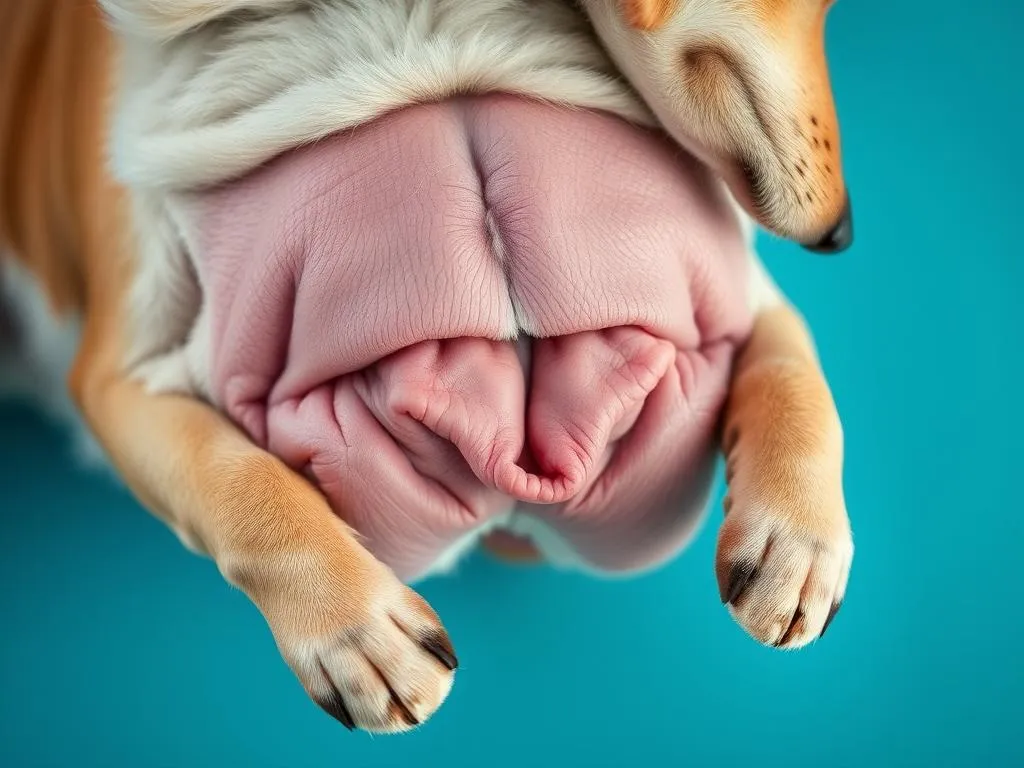
Introduction
A dog stomach flip, medically known as gastric torsion or bloat, is a serious condition that can affect dogs of any age, size, or breed. This condition occurs when the stomach fills with gas, food, or fluid, and subsequently twists on itself, leading to a potentially life-threatening situation. Understanding the intricacies of dog stomach health is paramount for pet owners, as recognizing the symptoms and knowing how to react can save a dog’s life.
This article aims to provide a comprehensive overview of dog stomach flips, including their anatomy, causes, symptoms, prevention strategies, and treatment options.
Anatomy of a Dog’s Stomach
Structure and Function
To appreciate the severity of a dog stomach flip, it’s essential to understand the dog’s digestive system. The canine digestive system consists of multiple organs, including the mouth, esophagus, stomach, intestines, liver, and pancreas.
The stomach plays a crucial role in the digestion process. It acts as a storage reservoir, where food is mixed with gastric juices before being passed into the intestines for further digestion and nutrient absorption. The stomach’s muscular walls contract to break down food and push it into the small intestine.
Common Stomach Issues
Dogs can experience various stomach-related issues, ranging from mild indigestion to severe conditions like gastric torsion. Other common problems include gastritis, pancreatitis, and gastrointestinal obstruction. Understanding these issues can help dog owners recognize the signs of a dog stomach flip and act promptly.
What is Gastric Torsion?
Definition and Explanation
Gastric torsion occurs when the dog’s stomach fills with gas, food, or fluid and becomes distended. As pressure builds, the stomach may rotate or flip on itself, cutting off blood supply and trapping gas inside. This condition is extremely painful and can lead to shock and death within hours if left untreated.
Causes of Gastric Torsion
Several factors can contribute to a dog stomach flip:
-
Genetic predispositions: Certain breeds are more susceptible to gastric torsion. For example, large and deep-chested breeds like Great Danes and Boxers are at higher risk.
-
Eating habits and behavior: Dogs that eat too quickly or consume large meals in one sitting may be more prone to bloat.
-
Physical factors: Engaging in vigorous exercise soon after eating can increase the likelihood of stomach flips.
Understanding these causes can help dog owners implement preventive measures to reduce the risk of gastric torsion.
Recognizing Symptoms of Stomach Flips
Early Signs
Recognizing the early signs of a dog stomach flip is crucial. Some of the initial symptoms include:
-
Unrest or pacing: Dogs may seem restless and unable to settle down.
-
Excessive drooling: Increased salivation can indicate nausea or distress.
Advanced Symptoms
As the condition progresses, more severe symptoms may manifest:
-
Distended abdomen: The dog’s belly may appear swollen or tight to the touch.
-
Non-productive retching: Dogs may attempt to vomit but produce little or no material.
-
Signs of distress or pain: Whining, barking, or signs of discomfort are common indicators that a dog is in pain.
Recognizing these symptoms early can be crucial for timely veterinary intervention.
Risk Factors for Stomach Flips
Breed Predispositions
Certain breeds are more susceptible to gastric torsion. Commonly affected breeds include:
- Great Danes
- Boxers
- German Shepherds
- Doberman Pinschers
- Rottweilers
Understanding breed predispositions enables owners to be more vigilant in monitoring their dogs for signs of distress.
Age and Size Considerations
Age and size play vital roles in the risk of experiencing a dog stomach flip. Older dogs and larger breeds are generally at a higher risk. Puppies, while not immune, are less likely to develop gastric torsion than their adult counterparts.
Environmental and Behavioral Factors
Several environmental and behavioral factors can influence the likelihood of gastric torsion, including:
-
Diet: Low-quality dog food that leads to gas production can increase the risk.
-
Stress: Dogs that experience anxiety during feeding can be at a higher risk.
-
Feeding practices: Dogs that are fed one large meal a day instead of smaller, more frequent meals may be more prone to bloat.
By understanding these risk factors, dog owners can take proactive steps to mitigate the chance of gastric torsion.
Preventing Gastric Torsion
Dietary Recommendations
One of the most effective ways to prevent a dog stomach flip is through careful dietary management. Here are some best practices:
-
Smaller, frequent meals: Feeding dogs smaller meals throughout the day can help prevent their stomachs from becoming overly full.
-
High-quality dog food: Choosing premium dog food that minimizes gas production is crucial.
Lifestyle Adjustments
In addition to dietary changes, lifestyle adjustments can significantly mitigate risks:
-
Exercise: It’s best to wait at least an hour after a meal before engaging in vigorous exercise.
-
Stress reduction: Creating a calm environment during meal times can help reduce anxiety-related eating behaviors.
Veterinary Interventions
In some cases, preventive surgeries, such as gastropexy, may be recommended by veterinarians. This procedure involves attaching the stomach to the abdominal wall to prevent it from flipping. Discussing this option with a veterinarian can be beneficial, especially for breeds at high risk.
What to Do if You Suspect a Stomach Flip
Immediate Actions
If you suspect your dog is experiencing a dog stomach flip, it’s crucial to act quickly.
- Recognize emergency signs: If your dog exhibits signs of distress, a distended abdomen, or non-productive retching, seek veterinary care immediately.
Veterinary Diagnosis and Treatment
Veterinarians typically use diagnostic procedures such as X-rays or ultrasounds to confirm gastric torsion. Treatment options may include:
-
Surgery: Most cases of gastric torsion require surgical intervention to untwist the stomach and reposition it.
-
Medication: Post-surgery, medications may be prescribed to manage pain and prevent infection.
Understanding these steps can help pet owners navigate this emergency effectively.
Post-Treatment Care and Recovery
Home Care Instructions
After treatment for a dog stomach flip, proper home care is vital for recovery:
-
Dietary management: Follow the veterinarian’s recommendations for food and feeding schedules.
-
Monitoring for complications: Keep an eye out for any signs of distress or complications that may arise during recovery.
Long-term Health Considerations
Regular follow-up visits with the veterinarian are essential to monitor your dog’s health. Maintaining a healthy lifestyle, including proper diet and regular exercise, is crucial for preventing future episodes of gastric torsion.
Conclusion
Understanding dog stomach flips is vital for every dog owner. Recognizing the symptoms, knowing the risk factors, and taking preventive measures can significantly impact your dog’s health and well-being. If you ever have concerns about your dog’s stomach health, consulting with a veterinarian is always the best course of action. Promoting a healthy lifestyle and being aware of potential issues will help ensure your dog remains happy and healthy for years to come.
FAQs
Common Questions About Dog Stomach Health
What causes gastric torsion in dogs?
Gastric torsion can be caused by several factors, including genetic predisposition, eating habits, and physical activity after meals.
How can I prevent my dog from experiencing a stomach flip?
Preventative measures include feeding smaller, more frequent meals, using high-quality dog food, and avoiding vigorous exercise immediately after meals.
What should I do if my dog shows signs of distress?
If your dog exhibits signs of distress, such as a distended abdomen or non-productive retching, seek veterinary care immediately. Acting quickly can save your dog’s life.
By educating yourself about dog stomach flips, you can play a crucial role in your dog’s health and well-being.









